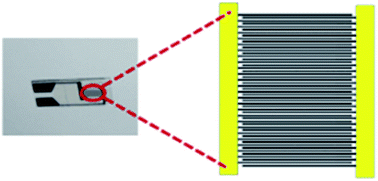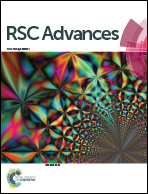Aptasensors modified by antimony tin oxide nanoparticle-chitosan based on interdigitated array microelectrodes for tetracycline detection
Abstract
Aptasensors modified by antimony tin oxide nanoparticle-chitosan (nano ATO-CS) based on interdigitated array microelectrodes (IDAMs) were developed for the detection of tetracycline. The nano ATO-CS film was fabricated onto the microelectrode surface, and then tetracycline aptamers were modified onto the film to prepare an aptasensor. The results showed that chitosan can disperse nano ATOs evenly and make them fixed on the microelectrode surface firmly. Nano-ATOs being incorporated into chitosan film can effectively promote the electron transfer reaction and enhance the electrochemical response. The electrochemical properties of the fabricated processes were characterized by electrochemical impedance spectroscopy (EIS). Parameters affecting the aptasensor response, such as pH of the base solution, the concentration of the aptamer and incubation time, were optimized. Under optimum conditions, different concentrations of tetracyclines were detected with the aptasensor. Based on the contributions of nano ATO-CS solutions, the proposed aptasensor displayed high sensitivity, high specificity, and a low detection limit (3.0 × 10−9 g mL−1). It could be successfully applied to the detection of tetracyclines in real milk spiked samples.


 Please wait while we load your content...
Please wait while we load your content...